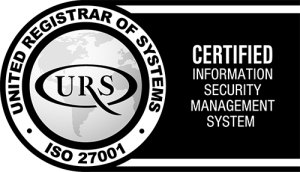Advisory Committee for Therapeutics
Frequently Asked Questions
Welcome to the TREAT-NMD Advisory Committee for Therapeutics (TACT) FAQ page. Here, we provide answers to common questions about TACT, its processes, and how it supports the neuromuscular community. If you have further questions not covered here, please don’t hesitate to contact us: education@treat-nmd.com
You can come to TACT at any stage of the drug development process. Most applicants approach TACT for the first time after selecting a lead compound, but we also accommodate those earlier in development through a tailored process. Likewise, applicants can also come when planning phase 2 or phase 3 clinical trials.
Yes, you can return to TACT as many times as you like, provided you bring different data, are at a different stage of development, or have a different program to review. Note that TACT is not designed for back-and-forth iterations on the same data.
Advice from TACT is provided in a comprehensive report delivered six weeks after your meeting. This includes general feedback, as well as answers to specific questions you have provided to the committee. Please note that feedback is not given during the meeting itself.
TACT offers a unique approach:
- Multidisciplinary Expertise: Panels consist of experts across diverse fields tailored to your needs.
- Bespoke Panels: Each panel is assembled based on the specific questions and challenges you present.
- Independent and Unbiased: Reviewers are not paid by the applicant, ensuring impartial advice
- Broad Scope: The advice covers scientific, regulatory, clinical, and other relevant areas.
- Confidentiality Agreement (CDA): The process begins with signing a CDA with TREAT-NMD.
- Pre-Application: You provide an outline of your program and specify the areas where you need advice. This helps us identify and invite suitable experts to join your panel. This should be done around 6 months prior to the meeting.
- Agreement: To formally secure your review slot, you must sign an agreement with TREAT-NMD.
- Full Application: Submit a detailed application at least eight weeks before your meeting date.
- Meeting: During the meeting, your panel will ask questions and discuss your program in detail.
- Advisory Report: Receive a written report with TACT’s recommendations six weeks after the meeting.
TACT convenes 2 times per year, in spring (Europe) and in autumn (North America). At these meetings there are 4 slots for applicants.
If a meeting is time sensitive (e.g. anticipating trial results), an ad hoc online meeting may be arranged.
To make the most of your TACT review, follow these tips:
- Submit a Detailed Application: Ensure your full application is clear, concise, and submitted at least eight weeks prior to the meeting. Use the application to outline the specific questions you would like the panel to address in your report. Questions cannot be submitted or introduced during the meeting.
- Provide a Short Update: You will have the opportunity to deliver a 10-minute update at the start of the meeting. Use this time to summarise your programme’s progress, key challenges, or any new data since your application. Note that the committee has thoroughly discussed your application before the meeting, so there is no need to summarise the application.
- Be Ready to Answer Panel Questions: During the meeting, the panel will ask questions across a wide range of areas, including clinical, pre-clinical, regulatory, statistics, and patient engagement. Ensure that your representatives can address all of these areas comprehensively.
- Be Open to Feedback: Be open to the panel’s advisory report challenging your assumptions and suggestions for alternative strategies
All TACT reviewers sign a confidentiality agreement before receiving any information. Additionally, a confidentiality agreement is established between TREAT-NMD and the applicant to ensure all shared materials are handled securely. TREAT-NMD strictly maintains the confidentiality of the TACT report, and it is not shared with any third parties. Reviewers are also reminded throughout the process to delete all confidential materials after the review is complete and to uphold the confidentiality of the entire process at all times.
A Global Patient Insight Panel (GPIP) and TREAT-NMD Advisory Committee for Therapeutics (TACT) serve different purposes. GPIP focuses on providing patient and caregiver insights to ensure therapies and clinical trials align with patient needs and priorities. It is composed of patients, caregivers, and advocates. In contrast, TACT offers expert scientific and strategic advice on therapy development, involving clinicians, scientists, industry representatives, and patient advocates. GPIP outputs patient-centered feedback, while TACT provides detailed scientific evaluations and recommendations. Both panels complement each other by addressing different aspects of therapy development.

